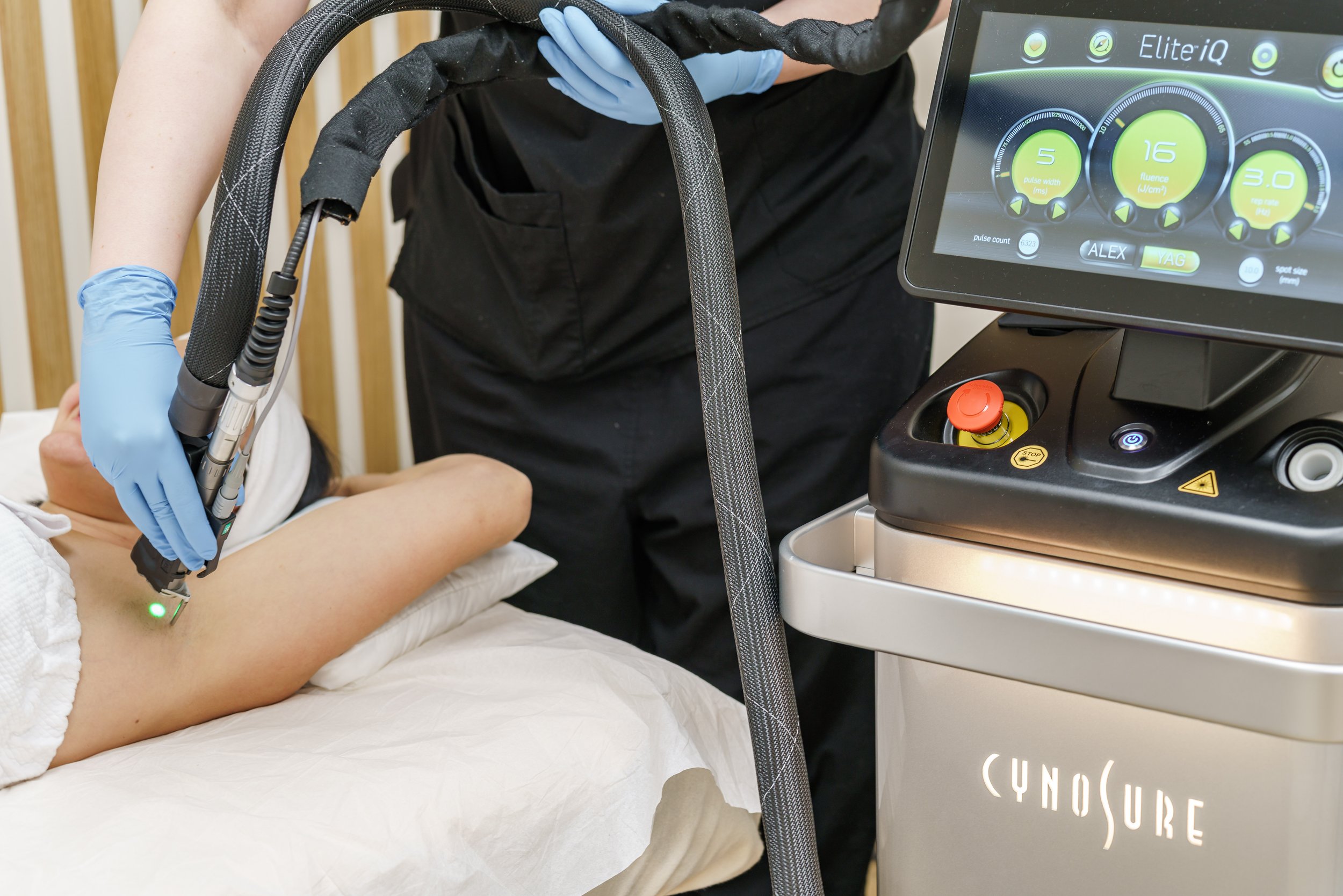Fitzpatrick Skin Type Guide: Personalizing Safety in Cosmetic Procedures
Undergoing aesthetic procedures involves understanding not just the latest laser technologies but also the canvas they are working on—your skin. The Fitzpatrick Skin Type is a crucial guide in the realm of laser cosmetic procedures. This system, developed by dermatologist Thomas Fitzpatrick, categorizes skin into types based on its response to sun exposure. Let's delve into the Fitzpatrick Skin Type, unlock its categories, and discover why it's essential for customized laser treatments.
Breaking It Down - The Fitzpatrick Skin Types I-VI:
Type I (Very Light): Very fair skin, often with freckles, red or light blonde hair, light-colored eyes. Primarily Northern European origin. Always burns, never tans.
Type II (Light): Fair skin, possibly with some freckles, blonde or light brown hair, blue, green, or gray eyes. Mainly Northern European. Usually burns, tans minimally.
Type III (Light to Moderate): Light to intermediate skin, any hair or eye color, more varied ethnic background including Southern European. Sometimes burns, gradually tans.
Type IV (Moderate): Olive or light brown skin, dark brown hair, dark eyes, often of Mediterranean, Asian, or Hispanic heritage. Rarely burns, tans easily.
Type V (Dark): Dark brown skin, very dark hair and eyes, typically of African, Middle Eastern, or Indian descent. Very rarely burns, tans very easily.
Type VI (Very Dark): Deeply pigmented dark brown to darkest brown skin, dark hair and eyes, primarily of African descent. Never burns.
Why It Matters in Laser Cosmetic Procedures
The Fitzpatrick Skin Type is crucial in laser cosmetics for safety and effectiveness. Different skin types absorb laser energy differently, affecting treatment outcomes. Darker skin (Type IV-VI) is especially sensitive to laser intensity, risking pigmentation without proper care. Tailoring treatments to Fitzpatrick Types enhances safety and results. A test patch is mandatory for Types IV-VI, 48-72 hours before treatment, to gauge reaction. Initial treatments for darker skin types are conservative, with adjustments made in follow-ups for safety and efficacy. Using the Fitzpatrick Skin Guide to tailor treatments ensures personalized and risk-minimized treatments. This approach guarantees the best possible outcomes, enhancing the cosmetic journey for clients across all skin types.



